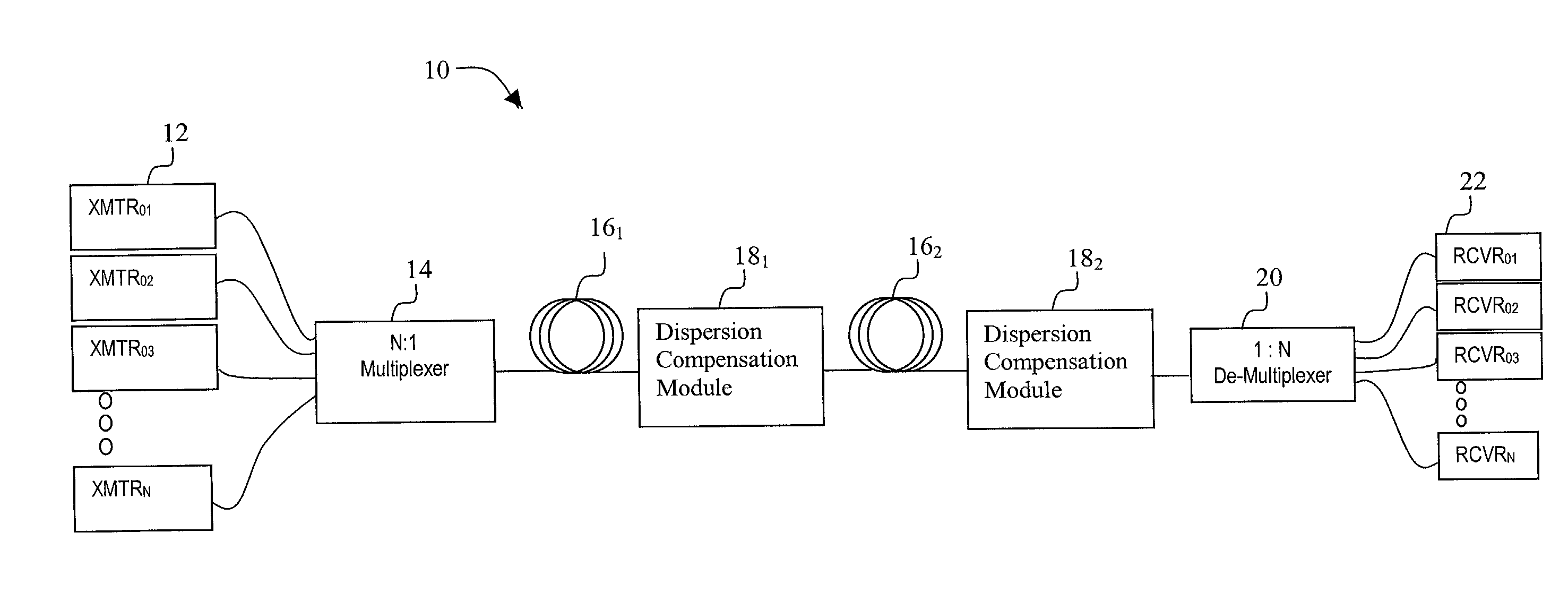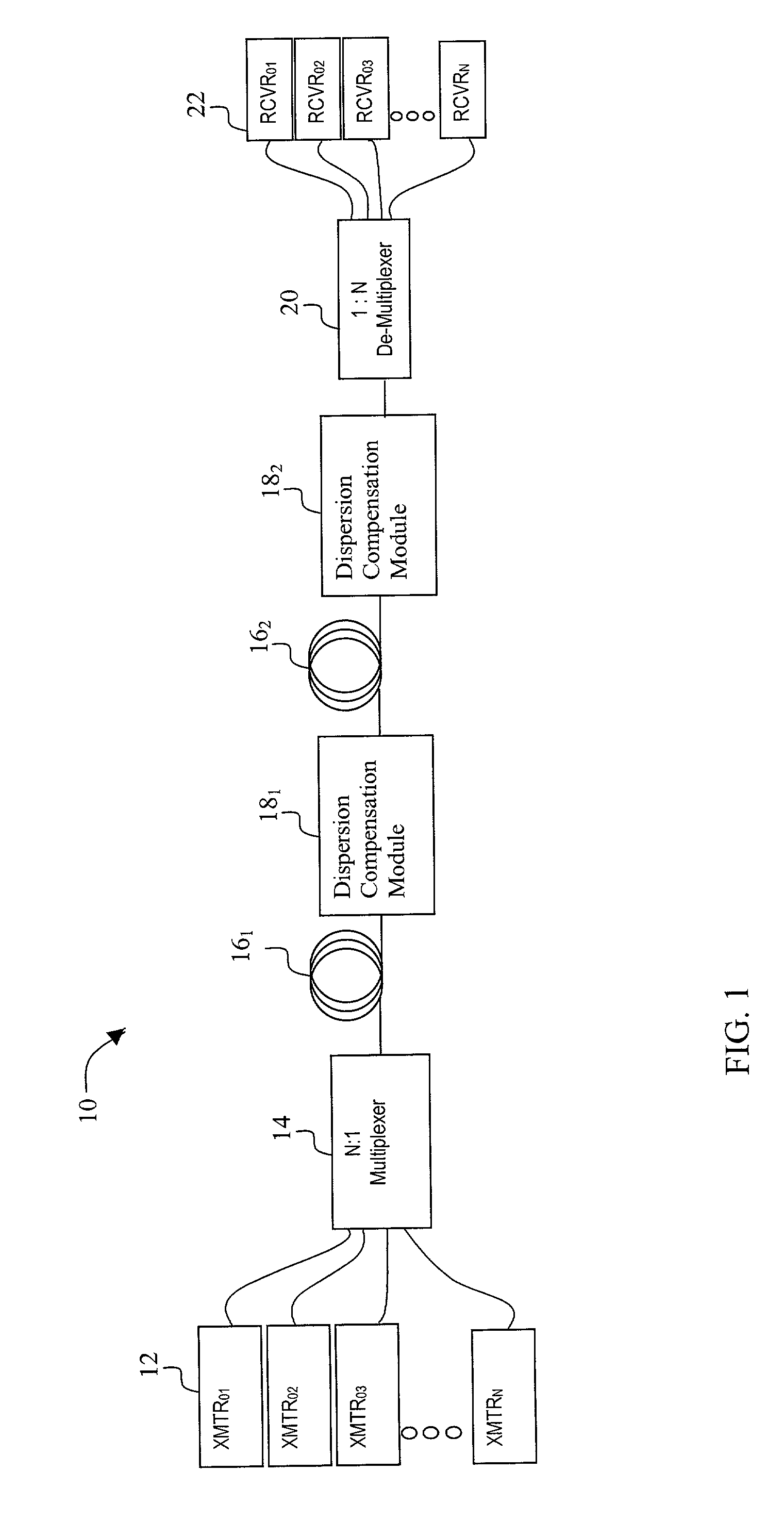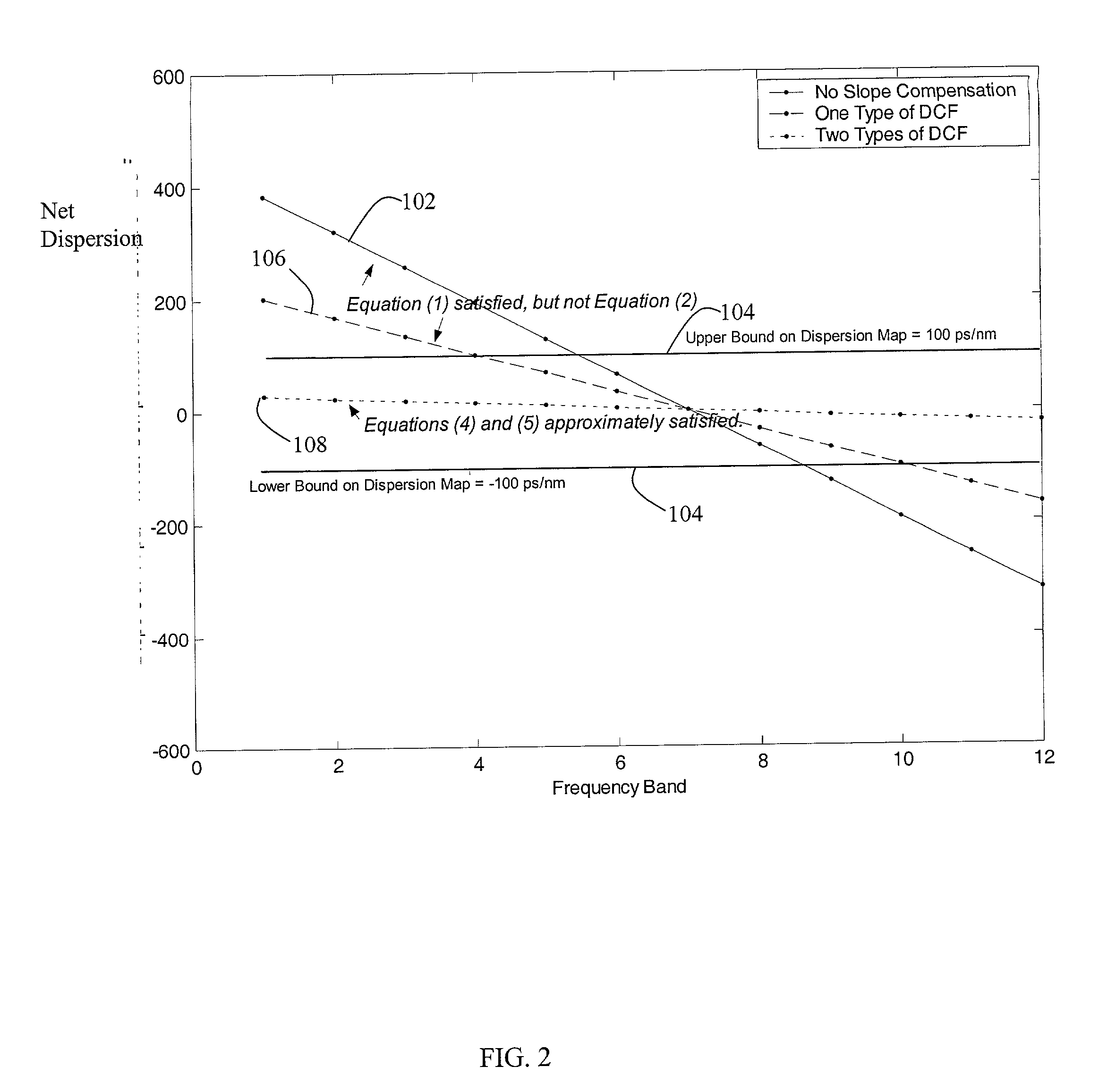Method and system for providing dispersion and dispersion slope compensation
a technology of dispersion slope and dispersion slope, applied in the field of dispersion slope compensation, can solve the problems of limiting the ability to transmit high data rates, affecting the ability to produce dcf that simultaneously compensates the dispersion slope, and the overall propagation penalty proportional to the square of bit ra
- Summary
- Abstract
- Description
- Claims
- Application Information
AI Technical Summary
Problems solved by technology
Method used
Image
Examples
first embodiment
[0036] Exemplary embodiments for providing multiple different types of DCF will now be described. An exemplary system in the invention is shown in FIG. 3. FIG. 3 depicts an inter-network element dispersion compensation approach and FIG. 4 depicts a span-based, terminal-to-terminal dispersion compensation approach.
[0037] As shown in FIG. 3, sections of transmission fiber 16 are in optical communication with dispersion compensation modules 18. These sections optically connect network elements along the transmission path. Additional components such as amplifiers 50 or optical add / drop multiplexers (OADM) 52 may also be in optical communication with the transmission fiber 16 and dispersion compensation modules 18. These additional components (e.g., amplifiers, OADMs, switches, gratings, etc.) may contribute to the dispersion and dispersion slope of the transmission path between network elements and be compensated by dispersion compensation modules 18.
[0038] In the embodiment shown in FI...
second embodiment
[0042] In the invention shown in FIG. 4, lengths of DCF are selected to compensate for dispersion along the entire terminal-to-terminal path (also referred to as a span) and optionally, any associated components. As noted above, additional components such as amplifiers 50 or optical add / drop multiplexers (OADM) 52 may also be in optical communication with the transmission fiber 16 and dispersion compensation modules 18. In this embodiment, each dispersion compensation module 18 includes a single type of DCF and the lengths of DCF are selected based on the solution to equations (4) and (5) for the entire span or terminal-to-terminal transmission path. At least two dispersion compensation modules 18 employ DCF having different dispersion slopes.
[0043] As shown in FIG. 4, dispersion compensation module 18.sub.1 includes DCF 42 and dispersion compensation module 18.sub.2 includes DCF 44, having a dispersion coefficient and / or a dispersion slope coefficient different than those of DCF 42...
PUM
 Login to View More
Login to View More Abstract
Description
Claims
Application Information
 Login to View More
Login to View More - R&D
- Intellectual Property
- Life Sciences
- Materials
- Tech Scout
- Unparalleled Data Quality
- Higher Quality Content
- 60% Fewer Hallucinations
Browse by: Latest US Patents, China's latest patents, Technical Efficacy Thesaurus, Application Domain, Technology Topic, Popular Technical Reports.
© 2025 PatSnap. All rights reserved.Legal|Privacy policy|Modern Slavery Act Transparency Statement|Sitemap|About US| Contact US: help@patsnap.com



